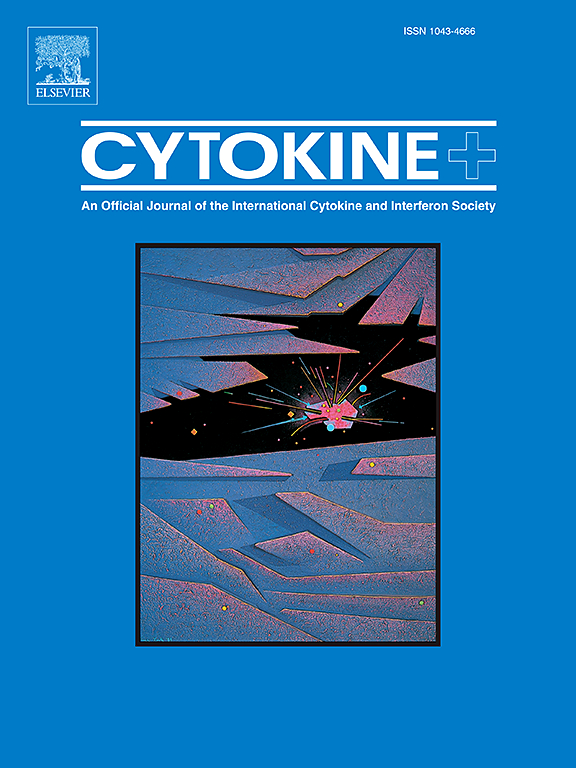Unveiling NLR pathway signatures: EP300 and CPN60 markers integrated with clinical data and machine learning for precision NASH diagnosis
IF 3.7
3区 医学
Q2 BIOCHEMISTRY & MOLECULAR BIOLOGY
引用次数: 0
Abstract
Background
Given the increasing prevalence of metabolic dysfunction-associated fatty liver disease (MAFLD) and non-alcoholic steatohepatitis (NASH), there is a critical need for accurate non-invasive early diagnostic markers.
Objective
This study aimed to validate NLRP3-related RNA signatures (EP300, CPN60, and ITGB1 mRNAs, miR-6881-5p, and LncRNA-RABGAP1L-DT-206) using an integrated molecular approach and advanced machine-learning algorithms to identify robust biomarkers for early diagnosis of NASH.
Methods
A cohort of 237 participants (117 Healthy controls, 60 MAFLD, 120 NASH) was utilized. Twenty-five demographic, clinical, and molecular features were collected from each participant. Various machine learning models were trained on the dataset.
Results
The Random Forest algorithm emerged as the most effective classifier. The model identified nine key features: EP300 mRNA, CPN60 mRNA, AST, D. bilirubin, Albumin, GGT, HbA1c, HOMA-IR, and BMI, achieving an impressive 97 % accuracy in distinguishing NASH from non-NASH cases.
Conclusion
The integration of molecular, clinical, and demographic data with machine learning algorithms provides a highly accurate method for the early diagnosis of NASH. This model holds promise for early detection in individuals at risk of progressing to cirrhosis or liver cancer and may aid in identifying new therapeutic targets for managing NASH.

揭示NLR通路特征:EP300和CPN60标记与临床数据和机器学习相结合,用于NASH的精确诊断
鉴于代谢功能障碍相关脂肪性肝病(MAFLD)和非酒精性脂肪性肝炎(NASH)的患病率日益增加,迫切需要准确的非侵入性早期诊断标志物。本研究旨在通过综合分子方法和先进的机器学习算法验证nlrp3相关RNA特征(EP300、CPN60和ITGB1 mrna、miR-6881-5p和LncRNA-RABGAP1L-DT-206),以识别用于NASH早期诊断的可靠生物标志物。方法237例受试者(健康对照117例,MAFLD 60例,NASH 120例)。从每位参与者收集了25个人口统计学、临床和分子特征。在数据集上训练了各种机器学习模型。结果随机森林算法是最有效的分类器。该模型确定了9个关键特征:EP300 mRNA、CPN60 mRNA、AST、D.胆红素、白蛋白、GGT、HbA1c、HOMA-IR和BMI,在区分NASH和非NASH病例方面达到了令人印象深刻的97%的准确率。结论将分子、临床和人口统计学数据与机器学习算法相结合,为NASH的早期诊断提供了一种高度准确的方法。该模型有望对有发展为肝硬化或肝癌风险的个体进行早期检测,并可能有助于确定管理NASH的新治疗靶点。
本文章由计算机程序翻译,如有差异,请以英文原文为准。
求助全文
约1分钟内获得全文
求助全文
来源期刊

Cytokine
医学-免疫学
CiteScore
7.60
自引率
2.60%
发文量
262
审稿时长
48 days
期刊介绍:
The journal Cytokine has an open access mirror journal Cytokine: X, sharing the same aims and scope, editorial team, submission system and rigorous peer review.
* Devoted exclusively to the study of the molecular biology, genetics, biochemistry, immunology, genome-wide association studies, pathobiology, diagnostic and clinical applications of all known interleukins, hematopoietic factors, growth factors, cytotoxins, interferons, new cytokines, and chemokines, Cytokine provides comprehensive coverage of cytokines and their mechanisms of actions, 12 times a year by publishing original high quality refereed scientific papers from prominent investigators in both the academic and industrial sectors.
We will publish 3 major types of manuscripts:
1) Original manuscripts describing research results.
2) Basic and clinical reviews describing cytokine actions and regulation.
3) Short commentaries/perspectives on recently published aspects of cytokines, pathogenesis and clinical results.
 求助内容:
求助内容: 应助结果提醒方式:
应助结果提醒方式:


